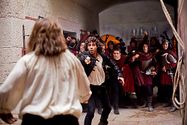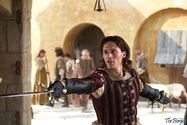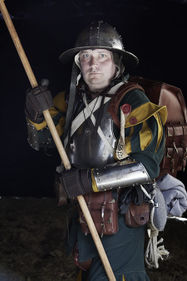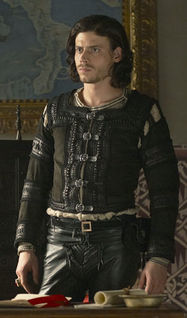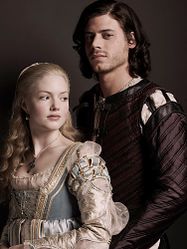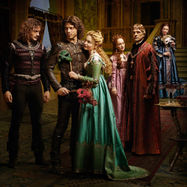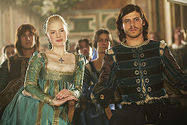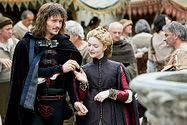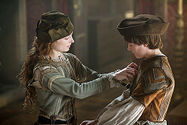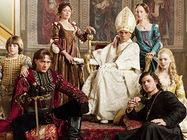The League look and feel
Overview
The League is urban. The influences come from the Italian city states, the Hanseatic
league, and Prague, as well as classic fantasy cities like Camorr from the Lies of Locke Lamora. Busy, but ordered, like clockwork. It has elements of Renaissance Venice, but (importantly) not just Venice. It is neither hovels nor a city of thieves and vagabonds nor the street urchins of old London.
The League is rich. Fine fabrics showing the wealth and style of merchant-princes. Rich silks in the south and fur trim for the northern cities of Temeswar and Holberg. It is opulent not ostentatious, a purposeful show of wealth and power.
Fine clothes on a citizen of the League allow them to strut a pleasing silhouette and are carefully designed to leave no doubt as to their abilities and skills. A gem encrusted hilt on a dagger that still needs to be drawn. They should be ready for a fight. Decoration and flourish intimately entangled with symbolism and a deep and genuine civic pride.
Rings show their allegiances. Jewellery shows their success. Masks and fans often hide their emotions.
Feel
Flamboyant, measured, rich, systematic, commerce, illusion, flourish, ambition, loyalty, gold.
Breakdown
Influences
High medieval and renaissance luxury.
Materials
Velvet, Cotton, Sillk, Fur Trim, Brocade
Colours
The pallette is rich and autumnal. Wine reds, golden yellows, supported
by rich oranges and deep blues and blacks. A dull or washed-out shade is an indication of poverty. Purple and black are considered colours of mourning when worn together; an unlucky combination that is to be avoided at other times.
Clothing
Fashion is a rapidly changing force in the League cities. A citizen will display their status and wealth in the choice of trim or the quality of the cloth from which garments are cut – “What you wear is who you are.”
In Catzarria to the south, doublets of richly patterned silks are cut to flatter. Sleeves are full, and the effect is somewhat top-heavy, with trousers or breeches cut fitted to a slender leg. Slashing is the height of fashion, particularly amongst the military whose taste verges on the gaudy.
The northern cities are colder in climate, and clothing reflects that. More fur trim, more layers. Perhaps a long sleeveless gown of velvet over the fashionable doublet, which might be made of leather not silk.
Hose are considered old-fashioned.
Ladies who do not favour doublet-and-breeches will be gowned. A fashionable lady of the northern cities will wear a long, full, gown, sleeved and high-waisted. The neckline may be lower than in other nations, showing an undergown or kirtle, often of a contrastng colour. To the south, the gown might be sleeveless, or with sleeves slashed like a doublet’s.
Religious folk will wear long robes, and often a skull cap. To the south, the robes will be red, in the north – black.
Armour
The street bravo will be in leathers, perhaps with a heavier shoulder piece. The military will wear heavy armour on vital areas, particularly the head, but a full harness is rare.
Shields
Not common. Small metal bucklers are sometimes used. A main gauche or stilletto is usually favoured for the off-hand.
Weapons
Crossbows for ranged combat. Sword and knife for the street fighter, blocks of long spears or halberds with flanks guarded by two-handed swords for the professional soldier.
Icons and important Images
The League flag is a red wolf on white crest above three coins, one for each of the three great cities that formed the Imperial Nation of Catazarria at the creation of the Empire. The citizens of the League love flags and emblems, especially ones that use riddles and puns encoded within the symbols. Every Carta has a symbol of their own including the Free Companies, Churches and Troupes.
In the League, people wear rings to demonstrate their allegiances, wearing one ring for each major loyalty they owe. The giving of rings is an invitation to commit oneself to the givers’ allegiance, and the casting away of rings is a clear sign that an association is over.
Images
Bravos
Bravos are usually light armoured if at all. They usally wield a rapier, sometimes paired with a short parrying dagger like a main gauche. Many Bravos are part of a Free Company.
Free Companies
The riotously bright uniforms of the Free Companies mostly comprise two colours, with sleeves and trousers in the main colour, slashed to let the contrasting colour show through. A steel breastplate and helm provides the basic armour.
Despite their gaudy appearance, the members of a Free Company are professional soldiers well used to carrying all their campaign equipment on their back in handy pouches, packs and blanket rolls.
Banners
An iconic impressive banner makes a bold statement for any Free Company.
Armour
A starting Free Company may equip its members with a bright uniform in two contrasting colours and a quilted jack. Wealthier companies may have matching arming doublets, armour and helmets.
Children
The Empire outlaws children taking the battlefield until they have passed their Citizenship tests, but some Free Companies include children of all ages. When employed as messengers, it is a matter of pride to dress them as well as the soldiers of the unit they represent.
Weapons
The crossbow is extremely popular with the Free Companies, as well as halberds and pikes.
Costume
League costume is beautifully tailored with layers of complex cutting and decoration. The ladies’ gowns are high waisted with low necklines and complicated detailing such as puffed or slashed sleeves.
Gentlemen wear doublets with similarly complex decoration; sleeves are often laced on to the body of the doublet. The look is generally rather top heavy with slim fitting trousers and high legged boots.
These stills are all taken from Neil Jordan’s “The Borgias”, the setting and period are perfect for Catazarria.
Temeswar and Holberg
Costume in Holberg is less colourful than the southern cities. Materials are thicker and heavier.
Temeswar is further north still and the costume reflects that with the use of fur not just as trimming but as an integral part of the costume.
Theatre and Masks
The tradition of masked theatre runs strong in League cities, where it is an important constituent of the magic of a performance.
Churches
The heavily decorated robes of the League priests are in sharp contrast to some of the ascetics of other nations. Lavish embroidery, metallic threads and elaborate headdresses are all used to communicate their importance.
